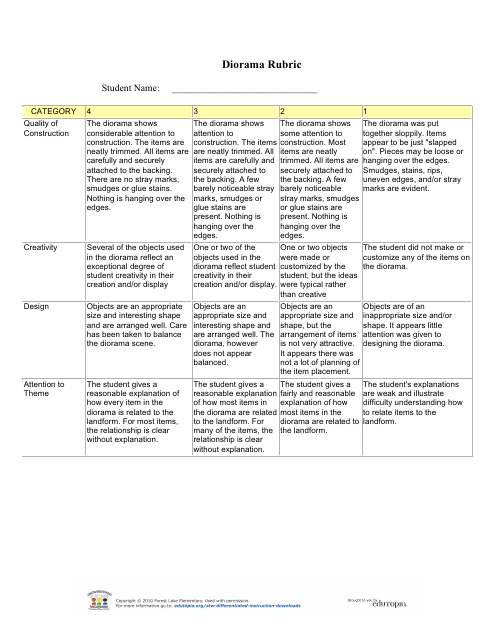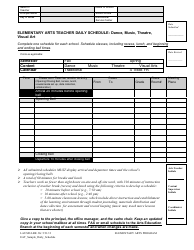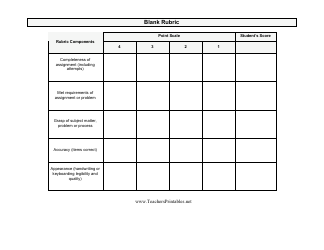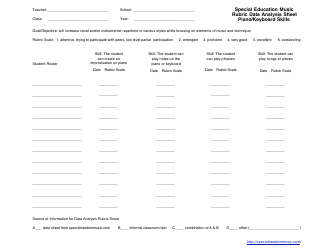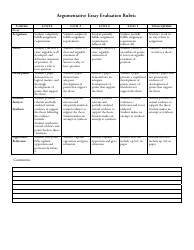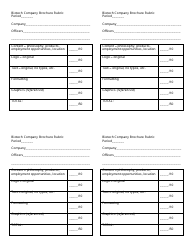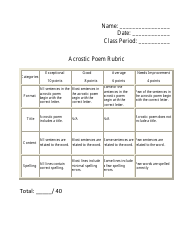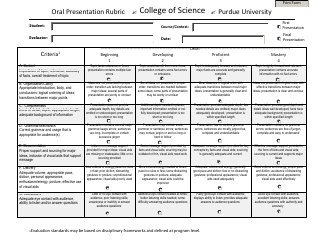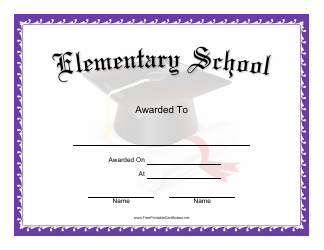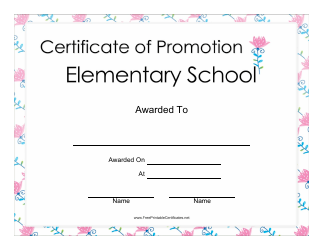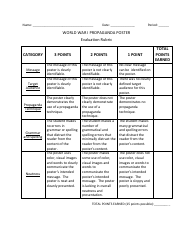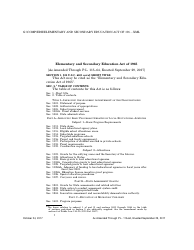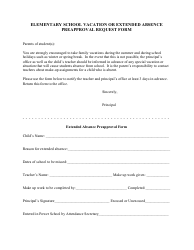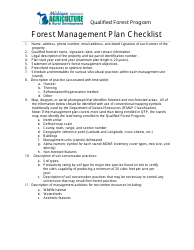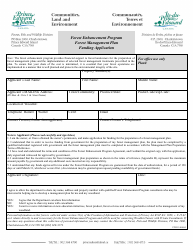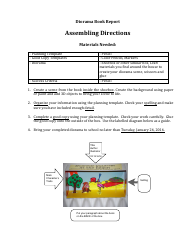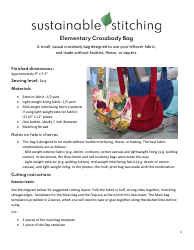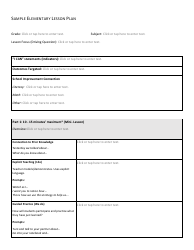Diorama Rubric Template - Forest Lake Elementary
The Diorama Rubric Template - Forest Lake Elementary is a scoring guide used by teachers at Forest Lake Elementary School. It's mainly for evaluating students' diorama projects, specifically those related to depicting a forest lake setting. These types of assignments often occur in subjects like science or geography where students are asked to represent ecosystems, wildlife, or geographic topography in a three-dimensional display. The rubric helps guide students on what is expected in terms of craftsmanship, accuracy, creativity, and presentation, while also providing a standardized system for teachers to grade these projects.
The Diorama Rubric Template at Forest Lake Elementary would typically be filed by the teachers who are assigned with the responsibility of grading and evaluating the students' work. This document provides a standard of performance for specific tasks, like creating a diorama, and is used by teachers to assess the performance and understanding of the students.
FAQ
Q: What is a diorama rubric template?
A: A diorama rubric template is a structured framework used for assessing and grading a diorama project. It outlines the criteria expected for the project, such as creativity, attention to detail, accuracy of information and overall presentation.
Q: What could a diorama rubric template for Forest Lake Elementary contain?
A: A diorama rubric template for Forest Lake Elementary would likely contain elements like concept clarity, use of materials, creativity, presentation, neatness, and accuracy of the content. The rubric aims to help students understand the expected standards and teachers in consistent grading.
Q: Why is a diorama project assigned to elementary students?
A: Diorama projects are often assigned to elementary students to foster creativity, build their research and planning skills, and enhance their understanding of specific topics. It also provides a fun and interactive way of learning.
Q: How are dioramas used in education?
A: Dioramas are used in education as a hands-on project that allows students to demonstrate their understanding of a particular subject or concept. They provide a creative platform to visually express knowledge and skills in subjects like science, social studies, or literature.
Q: What are the benefits of using a rubric in education?
A: Using a rubric in education helps clarify expectations, makes grading more objective and consistent, provides a feedback mechanism for students, and simplifies the grading process for teachers. It allows for transparency and understanding between educators and students.
